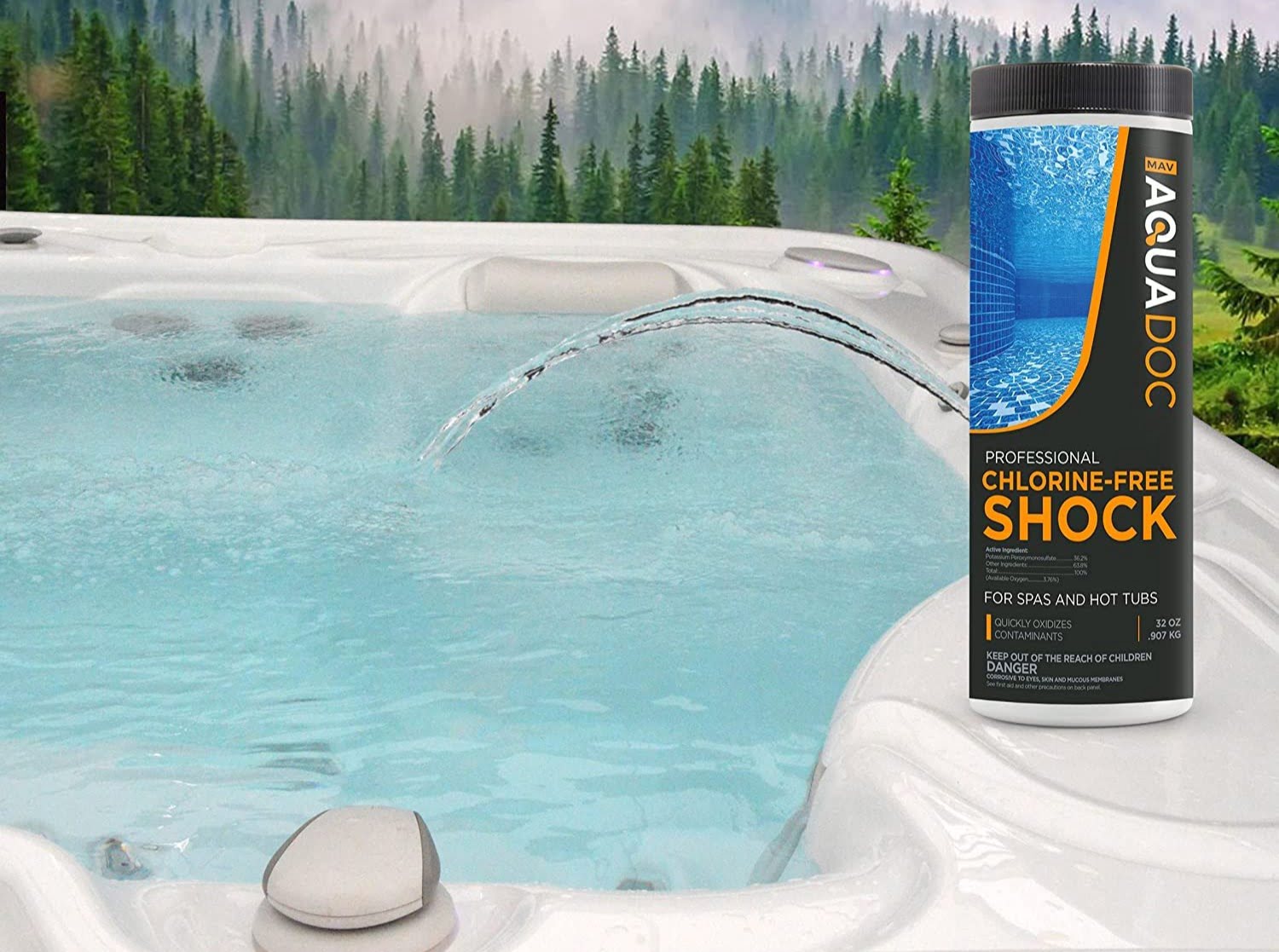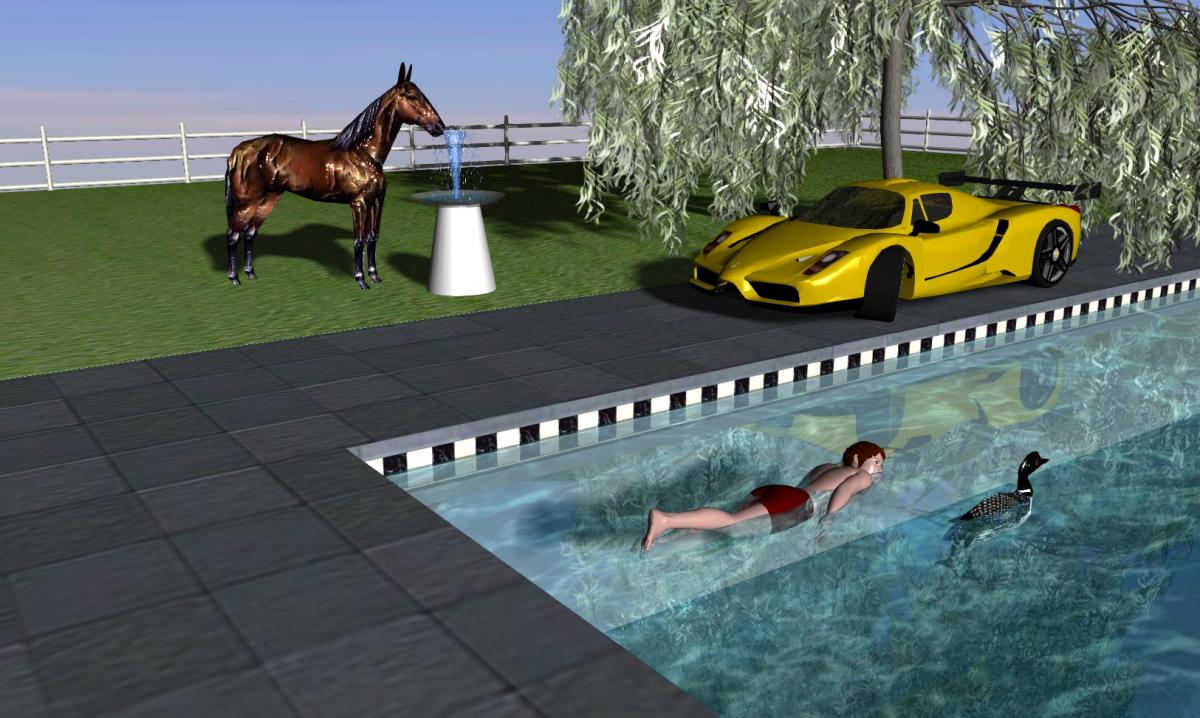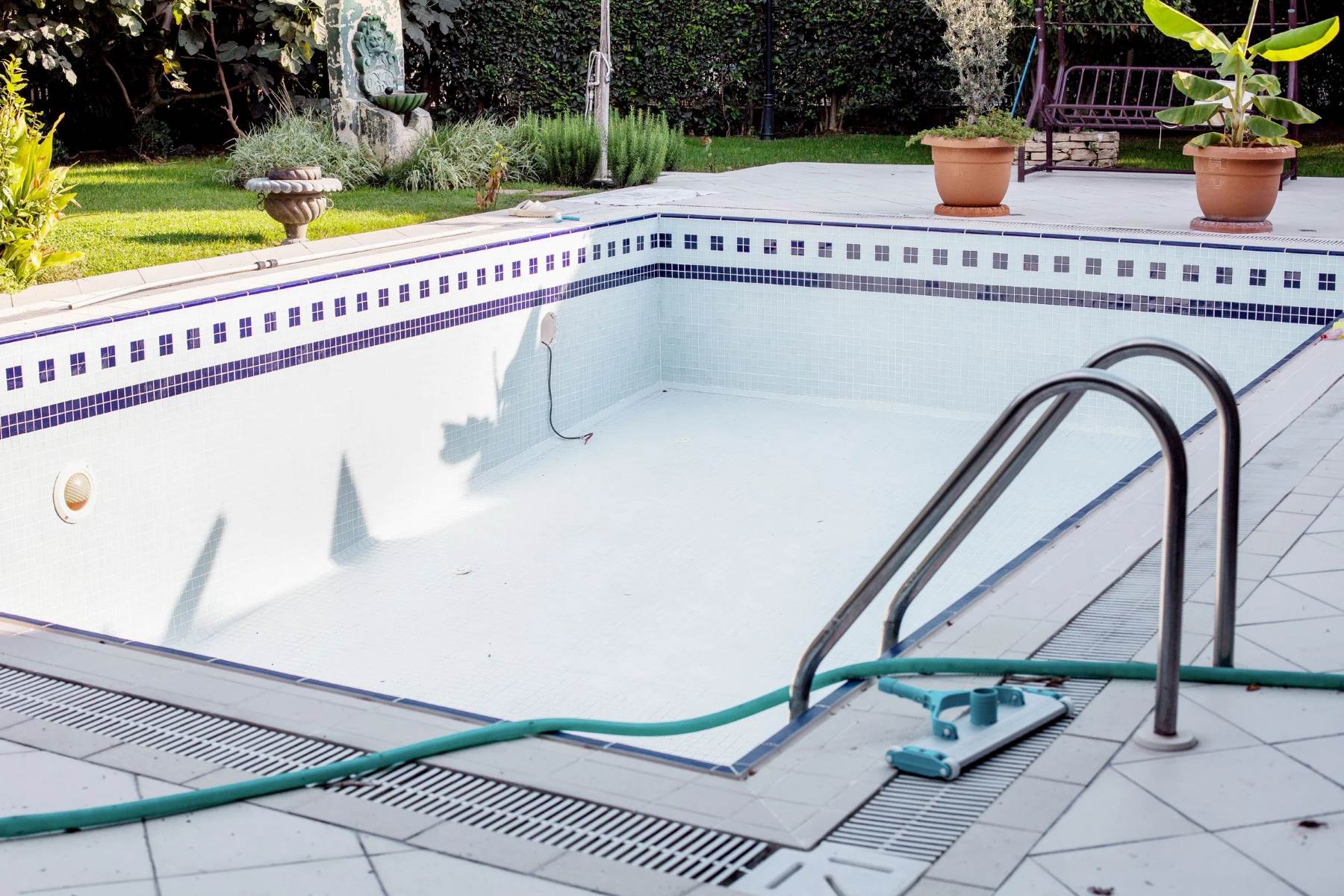Home>Gardening & Outdoor>Outdoor Recreation & Activities>How To Raise The Chlorine Level In A Swimming Pool


Outdoor Recreation & Activities
How To Raise The Chlorine Level In A Swimming Pool
Modified: February 28, 2024
Learn how to raise the chlorine level in your swimming pool with our expert tips for outdoor recreation and activities. Keep your pool clean and safe for all your summer fun!
(Many of the links in this article redirect to a specific reviewed product. Your purchase of these products through affiliate links helps to generate commission for Storables.com, at no extra cost. Learn more)
Introduction
Maintaining the proper chlorine level in a swimming pool is crucial for ensuring a safe and enjoyable swimming experience. Chlorine plays a vital role in disinfecting the water by eliminating harmful bacteria and contaminants, thereby safeguarding swimmers against waterborne illnesses. Whether you're a seasoned pool owner or a novice enthusiast, understanding the significance of chlorine levels and how to manage them effectively is essential for the overall maintenance of your pool.
In this comprehensive guide, we will delve into the intricacies of managing chlorine levels in swimming pools. From comprehending the ideal chlorine range to selecting the appropriate products and performing regular tests, we will equip you with the knowledge and techniques necessary to maintain a pristine and hygienic pool environment. By following these guidelines, you can ensure that your pool remains a refreshing oasis for relaxation and recreation.
Now, let's embark on a journey to unravel the nuances of maintaining optimal chlorine levels in your swimming pool. Whether you're preparing to open your pool for the summer season or seeking to enhance your existing maintenance routine, this guide will serve as your trusted companion in navigating the realm of pool care. So, let's dive in and explore the essential steps to elevate your pool maintenance prowess and elevate your swimming experience.
Key Takeaways:
- Keep your pool safe and enjoyable by maintaining chlorine levels between 1.0 to 3.0 parts per million. Regular testing and adjustments are crucial for a clean and inviting swimming environment.
- Choose the right chlorine product based on your pool’s needs. Stabilized chlorine offers sustained release, while unstabilized chlorine is ideal for rapid treatments. Consistent maintenance ensures a delightful swimming experience.
Read more: Why Is Chlorine Added To Swimming Pool Water
Understanding Chlorine Levels in Swimming Pools
Maintaining the appropriate chlorine levels in a swimming pool is fundamental to preserving water quality and ensuring the safety of swimmers. Chlorine serves as a powerful disinfectant, effectively eradicating harmful bacteria, algae, and other contaminants that may compromise the cleanliness of the pool water. Understanding the significance of chlorine levels and their impact on water quality is paramount for any pool owner.
The ideal chlorine level in a swimming pool typically falls within the range of 1.0 to 3.0 parts per million (ppm). This range is considered optimal for effectively sanitizing the water while minimizing the risk of skin and eye irritation for swimmers. It's important to note that the appropriate chlorine level may vary based on factors such as pool usage, weather conditions, and the presence of organic debris.
When chlorine levels are too low, the water becomes susceptible to bacterial growth and algae formation, leading to cloudy and unsanitary conditions. Conversely, excessively high chlorine levels can result in skin and eye irritation for swimmers, as well as the potent smell of chlorine emanating from the water. Striking a balance within the recommended chlorine range is essential for maintaining a clean, clear, and inviting pool environment.
Factors such as sunlight exposure, bather load, and the presence of organic matter can influence the rate at which chlorine dissipates from the water. Understanding these variables is crucial for effectively managing chlorine levels and ensuring consistent water quality. By monitoring and adjusting the chlorine levels in response to these factors, pool owners can uphold a hygienic and comfortable swimming environment for all users.
In essence, comprehending the nuances of chlorine levels in swimming pools empowers pool owners to make informed decisions regarding water treatment and maintenance. By maintaining the appropriate chlorine levels, pool enthusiasts can safeguard the health and well-being of swimmers while preserving the aesthetic appeal of their pool. This foundational understanding sets the stage for effective chlorine management and lays the groundwork for a pristine and inviting swimming experience.
Testing the Current Chlorine Level
Testing the current chlorine level in your swimming pool is a fundamental aspect of pool maintenance. Regular testing allows you to assess the effectiveness of your chlorine treatment and make informed decisions regarding the necessary adjustments to maintain optimal water quality. There are various methods available for testing the chlorine level, each offering unique advantages in terms of accuracy and convenience.
One of the most common methods for testing chlorine levels is to use test strips. These strips are designed to provide a quick and straightforward assessment of the chlorine concentration in the pool water. To perform the test, simply immerse the test strip in the water for a few seconds, then compare the resulting color changes to the provided chart. This color comparison allows you to determine the current chlorine level with relative ease.
Another popular option for testing chlorine levels is the use of liquid test kits. These kits typically include reagents that react with the pool water to produce color changes indicative of the chlorine concentration. By following the instructions provided with the test kit, you can obtain a precise measurement of the chlorine level, enabling you to make accurate adjustments as needed.
For those seeking advanced technology and convenience, digital chlorine testers offer a high degree of accuracy and efficiency. These electronic devices utilize sensors to analyze the chlorine content in the water, providing digital readouts of the current levels. While digital testers may require a higher initial investment, they offer unparalleled precision and ease of use, making them a valuable tool for meticulous pool maintenance.
Regardless of the testing method employed, it is essential to conduct regular chlorine tests to monitor fluctuations in the water quality. Factors such as weather changes, pool usage, and environmental debris can influence chlorine levels, necessitating periodic assessments to ensure consistent sanitation. By staying proactive in testing the chlorine level, pool owners can promptly identify any deviations from the optimal range and take corrective measures to uphold water quality.
In essence, testing the current chlorine level serves as a cornerstone of effective pool maintenance, enabling pool owners to uphold a safe and inviting swimming environment. By leveraging the appropriate testing methods and staying vigilant in monitoring chlorine levels, you can proactively safeguard the well-being of swimmers and preserve the pristine allure of your pool.
Choosing the Right Chlorine Product
Selecting the appropriate chlorine product is a pivotal decision that significantly influences the effectiveness of pool maintenance. When it comes to choosing the right chlorine product, pool owners are presented with a range of options, each tailored to specific needs and preferences. Understanding the distinct characteristics of various chlorine products is essential for making an informed choice that aligns with your pool maintenance objectives.
One of the most common chlorine products available is stabilized chlorine, often in the form of chlorine tablets or granules. Stabilized chlorine contains cyanuric acid, which serves to shield the chlorine from degradation due to sunlight exposure. This type of chlorine is well-suited for outdoor pools that are frequently exposed to sunlight, as it helps maintain a consistent chlorine level over time. Additionally, stabilized chlorine is convenient to use and can be added to pool water through a floating dispenser or automatic feeder, providing a steady release of chlorine for continuous sanitation.
Unstabilized chlorine, such as calcium hypochlorite or liquid chlorine, offers a potent and fast-acting solution for addressing chlorine deficiencies in pool water. Unlike stabilized chlorine, unstabilized chlorine does not contain cyanuric acid, making it ideal for shock treatments and rapid chlorine boosts. This type of chlorine is particularly effective in swiftly elevating chlorine levels to combat algae growth, bacterial contamination, or sudden increases in pool usage. However, it is important to note that unstabilized chlorine may require more frequent application, especially in outdoor pools exposed to direct sunlight.
Saltwater chlorination systems present an alternative approach to chlorine maintenance, utilizing electrolysis to generate chlorine from dissolved salt in the pool water. While not a traditional chlorine product in the conventional sense, saltwater chlorination systems offer a self-regenerating and low-maintenance solution for ensuring consistent chlorine levels. By producing chlorine on-site, these systems eliminate the need for manual chlorine application and provide a gentler swimming experience with reduced skin and eye irritation.
Ultimately, the choice of chlorine product hinges on factors such as pool size, environmental conditions, maintenance preferences, and budget considerations. By evaluating the unique characteristics and benefits of each chlorine product, pool owners can make an informed decision that aligns with their specific maintenance requirements. Whether opting for stabilized chlorine for sustained release, unstabilized chlorine for rapid treatments, or a saltwater chlorination system for automated sanitation, selecting the right chlorine product is instrumental in upholding water quality and ensuring a delightful swimming experience.
To raise the chlorine level in your swimming pool, you can add chlorine tablets or liquid chlorine. Follow the manufacturer’s instructions for the correct dosage based on the size of your pool. Test the water regularly to ensure the chlorine level stays within the recommended range.
Adding Chlorine to the Pool
Adding chlorine to the pool is a pivotal step in maintaining optimal water quality and ensuring a safe and hygienic swimming environment. Whether you're addressing chlorine deficiencies, performing routine maintenance, or conducting shock treatments, the process of adding chlorine demands precision and attentiveness to achieve the desired sanitation outcomes.
When adding chlorine to the pool, it is essential to consider the recommended dosage based on the current chlorine level and the volume of the pool water. This dosage guidance can be obtained from the instructions provided with the specific chlorine product or through professional recommendations. By adhering to the prescribed dosage, pool owners can effectively regulate chlorine levels without risking over- or under-treatment, thereby promoting balanced water sanitation.
The method of adding chlorine to the pool may vary depending on the chosen chlorine product. For stabilized chlorine in tablet or granular form, utilizing a floating dispenser or automatic feeder offers a convenient and consistent means of introducing chlorine into the water. These dispensing systems gradually release chlorine, ensuring a sustained and uniform distribution throughout the pool. Alternatively, unstabilized chlorine products, such as calcium hypochlorite or liquid chlorine, can be manually added to the pool water, either by dispersing them directly into the pool or pre-dissolving them in a bucket of water before application.
It is important to disperse the chlorine evenly across the pool surface to facilitate thorough mixing and distribution. This can be achieved by pouring the chlorine solution or adding the chlorine product in a manner that allows for swift dispersion. Additionally, ensuring adequate circulation of the pool water through the use of the filtration system or manual mixing can aid in achieving uniform chlorine distribution, thereby optimizing the effectiveness of the treatment.
Following the addition of chlorine, allowing sufficient time for the chlorine to disperse and interact with the water is crucial for realizing its sanitizing effects. This period of circulation and interaction enables the chlorine to combat bacteria, algae, and contaminants, thereby purifying the water and upholding its clarity and hygiene. By adhering to the recommended contact time, pool owners can maximize the efficacy of the chlorine treatment and promote a clean and inviting swimming environment.
In essence, adding chlorine to the pool demands a meticulous approach that encompasses accurate dosage, uniform dispersion, and adequate interaction time. By conscientiously executing the process of adding chlorine, pool owners can uphold water quality, mitigate the risk of waterborne illnesses, and ensure that their pool remains a refreshing and rejuvenating oasis for swimmers of all ages.
Read more: What Is Free Chlorine In A Swimming Pool
Testing and Adjusting the Chlorine Level
Testing and adjusting the chlorine level in a swimming pool is a critical aspect of effective pool maintenance, ensuring that the water remains clean, safe, and inviting for swimmers. Regular testing allows pool owners to monitor the chlorine concentration and make necessary adjustments to uphold optimal water quality.
When testing the chlorine level, it is essential to utilize reliable testing methods such as test strips, liquid test kits, or digital testers. These tools provide accurate measurements of the chlorine concentration, enabling pool owners to gauge the effectiveness of their current treatment and identify any deviations from the recommended range of 1.0 to 3.0 parts per million (ppm). By conducting regular tests, pool enthusiasts can stay proactive in addressing fluctuations in chlorine levels, thereby safeguarding the health and comfort of swimmers.
Upon obtaining the test results, it is crucial to assess whether the chlorine level falls within the optimal range. If the chlorine concentration is below the recommended range, it may indicate insufficient sanitation, rendering the water susceptible to bacterial growth and contamination. In such instances, adjusting the chlorine level becomes imperative to restore water quality and ensure the safety of swimmers.
To adjust the chlorine level, pool owners can introduce the appropriate chlorine product based on the specific requirements of their pool. For instance, if the chlorine level is below the optimal range, adding stabilized chlorine in the form of tablets or granules can help maintain a sustained release of chlorine, gradually elevating the concentration to the desired range. Conversely, if immediate correction is needed, unstabilized chlorine products such as calcium hypochlorite or liquid chlorine can be employed to swiftly boost the chlorine level through shock treatments.
Following the addition of chlorine, retesting the water after a brief interval allows pool owners to verify the effectiveness of the adjustment and ensure that the chlorine level aligns with the recommended range. This iterative process of testing and adjusting the chlorine level enables pool owners to maintain consistent water quality, mitigate the risk of waterborne illnesses, and uphold a pristine and enjoyable swimming environment for all users.
By staying vigilant in testing and adjusting the chlorine level, pool owners demonstrate a commitment to proactive pool maintenance, fostering a safe and hygienic environment that beckons swimmers to indulge in the refreshing allure of their pool.
Maintaining the Chlorine Level
Sustaining the appropriate chlorine level in a swimming pool is an ongoing commitment that underpins the overall cleanliness and safety of the water. Once the ideal chlorine range of 1.0 to 3.0 parts per million (ppm) is achieved, it becomes imperative to employ consistent measures to uphold this optimal level and preserve water quality.
Regular monitoring of the chlorine level is essential to detect any fluctuations that may arise due to factors such as weather variations, pool usage, and environmental debris. By conducting periodic tests using reliable testing methods, pool owners can promptly identify deviations from the optimal range and take proactive steps to rectify any imbalances.
In addition to testing, maintaining the chlorine level necessitates a comprehensive understanding of the pool's usage patterns and environmental influences. Factors such as sunlight exposure, bather load, and the presence of organic matter can impact the rate at which chlorine dissipates from the water. By acknowledging these variables, pool owners can adjust their maintenance practices to align with the specific needs of their pool, thereby ensuring consistent water sanitation.
Furthermore, adhering to a regular maintenance schedule for adding chlorine and conducting necessary adjustments is instrumental in preserving the desired chlorine level. Whether through the use of stabilized chlorine for sustained release or unstabilized chlorine for shock treatments, the strategic application of chlorine products enables pool owners to counteract fluctuations and uphold water quality.
The filtration and circulation systems also play a pivotal role in maintaining the chlorine level, as they facilitate the even distribution of chlorine throughout the pool water. By ensuring optimal operation of these systems and implementing regular maintenance checks, pool owners can enhance the efficacy of chlorine treatment and promote uniform sanitation.
Moreover, proactive measures such as skimming the pool surface, removing debris, and maintaining proper water balance contribute to the overall stability of the chlorine level. By minimizing the presence of contaminants and organic matter, pool owners can mitigate the strain on the chlorine treatment, thereby preserving its effectiveness in sanitizing the water.
In essence, maintaining the chlorine level in a swimming pool demands a holistic approach that encompasses regular testing, strategic chlorine application, and attentive consideration of environmental factors. By integrating these practices into a comprehensive maintenance regimen, pool owners can uphold consistent water quality, safeguard the well-being of swimmers, and ensure that their pool remains a pristine and inviting haven for relaxation and recreation.
Frequently Asked Questions about How To Raise The Chlorine Level In A Swimming Pool
Was this page helpful?
At Storables.com, we guarantee accurate and reliable information. Our content, validated by Expert Board Contributors, is crafted following stringent Editorial Policies. We're committed to providing you with well-researched, expert-backed insights for all your informational needs.















0 thoughts on “How To Raise The Chlorine Level In A Swimming Pool”